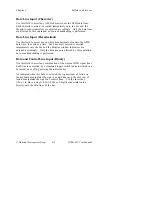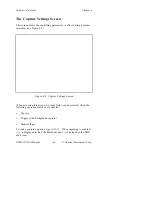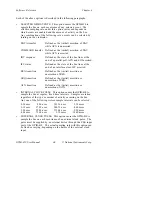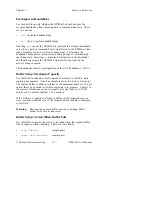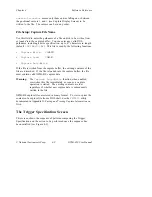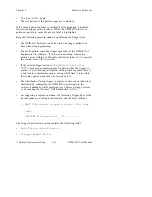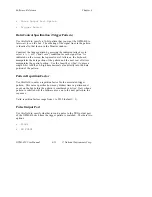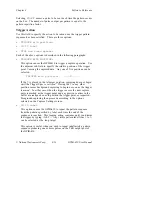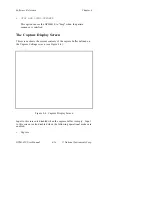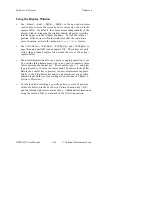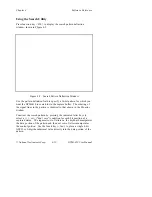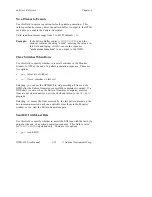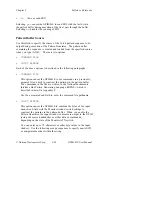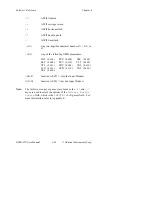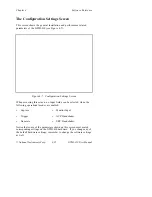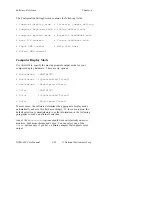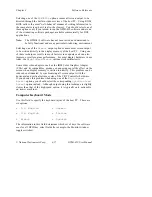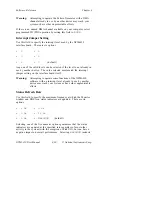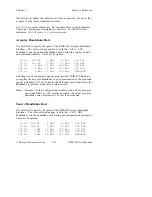
Software Reference
Chapter 4
GPIB-410 User Manual
4-16
© National Instruments Corp.
directly above this field displays the relative offset of each buffer
entry from either the capture trigger point or the beginning of the
buffer, whichever is appropriate.
Use <Alt-H> to toggle the numeric base of all offsets from decimal
to hex. The default display base is decimal.
This field and column are empty during Capture Echo operation.
•
« DATA »
These columns display the data portion of each buffer entry. The
left column contains the ASCII and hex representations and the
right column contains the corresponding binary representation. Only
the lower seven bits of each data value are used in determining
ASCII representations. Characters whose upper bit is set to one are
shown in high intensity.
•
« CONTROL »
These columns display the control portion of each buffer entry. The
left column contains the binary values of the five bus management
lines and the right column contains the binary values of the three
bus handshake lines. The ordering of these lines is the same as that
shown in the right half of the Monitor window.
•
Pg
#
This indicator is present when an oversized capture file is partially
loaded and available for paging.
#
equals the offset of the
currently loaded page. File pages start at zero and are equal in size
to the currently defined capture buffer.
•
Up or down arrow indicators are present in the status bars when the
capture buffer contains more entries beyond the indicated display
window boundaries.
•
Up or down triangle indicators are present in the status bars when a
loaded capture file contains more pages beyond the indicated
capture buffer boundaries.
•
The large section on the right of the window describes each buffer
entry using typical IEEE-488 mnemonics. The first column within
this section is reserved for mnemonic interpretation of the eight bus


